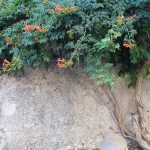Among all things Cres island is known for, the most likeable feature must surely be its sheep. They roam around freely, nibbling on Mediterranean herbs and enjoying the sun; while driving around, you’re sure to pass by a couple of friendly-looking animals. You might even get a baaa greeting out of them!
With such a recognisable trait, it makes sense for Cres to house an institution dedicated to the most prominent member of its fauna. The Sheep Breeding Museum pays tribute to the long-running tradition on the island; conceived and run by skilled local experts, the museum introduces visitors to the history of sheep breeding on Cres through interesting exhibits such as tools for sheep shearing and wool treating. Friendly guides will take you through the endearing story, and if you’re in luck, you might even come across an event or a workshop and get acquainted with this traditional craft.
One such opportunity begins today, September 29: the Wool Festival, a manifestation that has been taking place in Lubenice town on Cres island since 2014. This year, the festival features a workshop about wool colouring, with 14 participants from Cres and other towns from the regions of Kvarner and Lika.
One of the main goals of the festival is to gather people interested in wool treatment to exchange knowledge. Last year, the festival served as a perfect occasion to present the results of their work in a publication titled ‘Homage to Wool’. Centre Gerbin, Ruta Group and the Museum of Cres united to create a beautiful monography in Croatian and English, featuring stunning photographs and stories of sixteen creative enthusiasts and visionaries who set out to present the world with wool as an art, as beauty, as a life force.
We’ll let this lovely statement from the introduction to Homage to Wool speak for itself:
“At the time when people were using materials from their natural surroundings, wool was omnipresent: it was neither luxurious nor extravagant, it was inevitable. However, the versatility of wool, in this day and age, is not in accordance with its frequency of use, that is, its usage in everyday life has been reduced to a minimum. On one hand, wool is discarded as a useless raw material; on the other hand, it is often accessible only to well-off individuals. In that manner, wool is becoming exclusive, and often an expression of a life philosophy that promotes a return to nature as opposed to hectic civilisation. It is as though, similar to the natural yearly cycles, human history repeats itself; forgotten knowledge is being rediscovered and man is returning to his beginnings. In ancient history, the first communities viewed the world as the unity of man and nature; not as harmony, coexistence, but as wholeness, a symbiosis in which one cannot exist without the other. Man took from nature, but also returned to it, making sure not to break the chain in which he is only one link. Since, according to the beliefs of the time, man and nature are equal, then nature, just as man, possesses an immaterial spirit, which, over time, received human characteristics.”
You can take a look through the wonderful book here.
The Sheep Breeding Museum is open until October 15, every day from 9.30 to 13.30 and again from 16:00 to 21:00. The entrance is free, so in case you actually do find yourself driving around Cres, when you spot a sheep or an entire herd, remember to look for Lubenice and pay a visit to this fantastic spot. You can find more information here.
Sources: Pokret Otoka, Muzej ovčarstva











